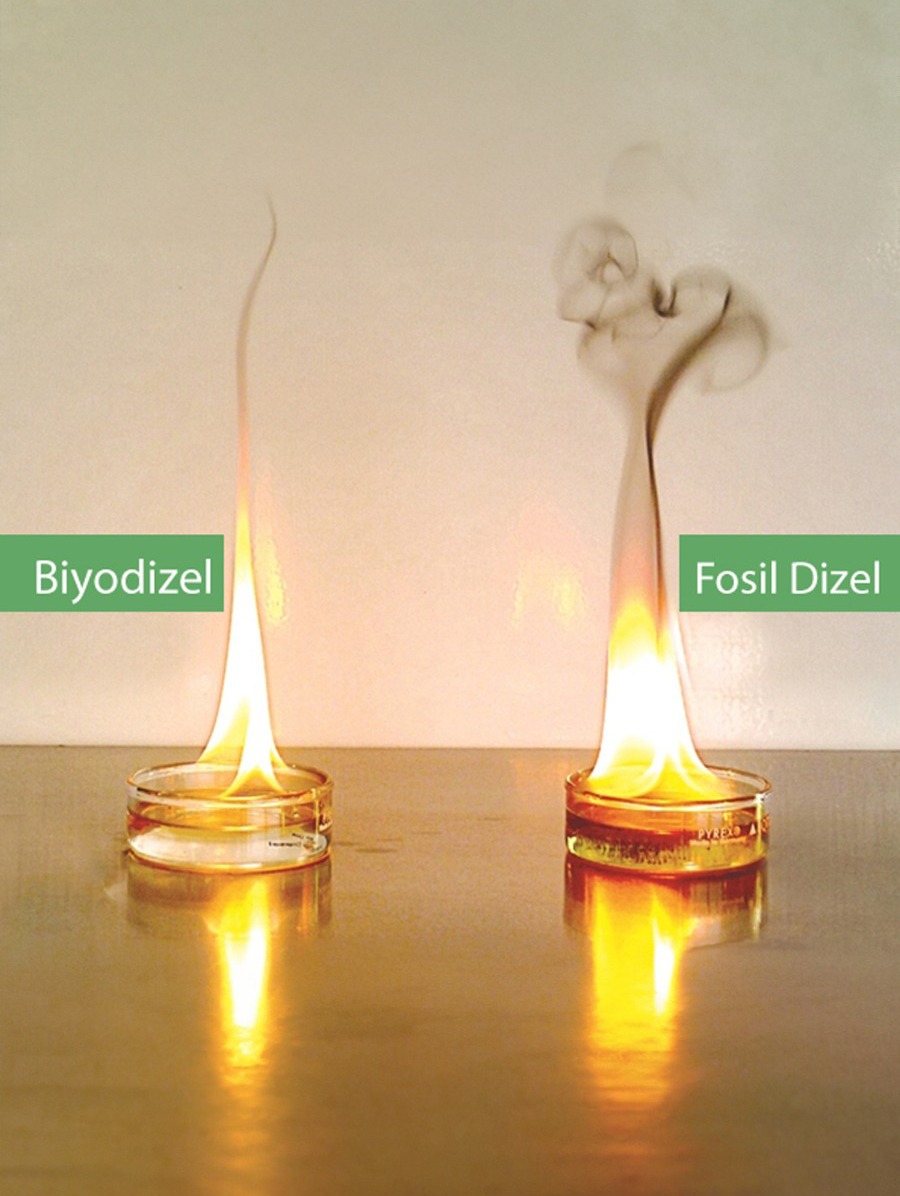What is Biodiesel?
How is it Produced?
The most common method used for biodiesel production today is transesterification, or mutual esterification. First, plant-based oils are reacted with alcohols like ethanol or methanol in the presence of a catalyst. In this process, alcohol and the catalyst are mixed together. Then, plant oils are added to this mixture, and the system is sealed from the atmosphere, allowing the reaction to begin. As a result of these processes, biodiesel is obtained. It is crucial to keep the system sealed to prevent the loss of alcohol. The reaction produces both biodiesel and glycerin. Due to the higher density of glycerin compared to biodiesel, the two substances separate from each other by gravitational difference. Glycerin is then distilled to purify it to 99% purity, making it suitable for use in the pharmaceutical and cosmetic industries.
Advantages of Biodiesel for Us
Biodiesel has no harmful toxic effects. The lethal dose of biodiesel when ingested is 17.4 biodiesel/kg body weight, which is 10 times higher than the lethal dose of salt. Skin contact tests conducted on humans have shown that biodiesel is less toxic than a 4% soap solution.

What is the Difference Between Diesel and Biodiesel?
- Diesel and biodiesel are two carbon-based organic products obtained from different sources. Diesel comes from the process of refining petroleum or crude oil, while biodiesel is produced from vegetable oils.
- The biggest difference between the two is that diesel is a non-renewable energy source, as it comes from finite fossil fuels, whereas biodiesel is renewable.
- A major disadvantage of diesel is that it poses a significantly higher environmental risk compared to other fuels. Another important drawback is that it is a finite resource. The combustion of diesel increases the harmful emissions of carbon, sulfur, and nitrogen oxides into the atmosphere.
- On the other hand, biodiesel is a renewable energy source. It can be used in engines designed to run on traditional diesel fuel without causing any harm to the engine. Additionally, biodiesel emits very low levels of air pollution.
The Status of Biodiesel in Turkey
- Turkey’s first work on biodiesel was carried out in 1934 at the Atatürk Forest Farm under the title “The Use of Vegetable Oils in Agricultural Tractors,” even before the European Union (EU) began exploring biodiesel.
- In Turkey, biodiesel gained attention in the early 2000s, influenced by global developments.
- Research at universities rapidly advanced in this field.
- In 2001, the Ministry of Industry and Trade established the “Biodiesel Working Group” to coordinate efforts in the development and promotion of biodiesel production.
- Turkey ranks second in the world in terms of biodiesel production capacity, with 1.5 million tons, following Germany.
- Turkey’s installed capacity is sufficient to meet the mandatory biodiesel requirements set by the EU and has the potential to become an important export hub for biodiesel.




